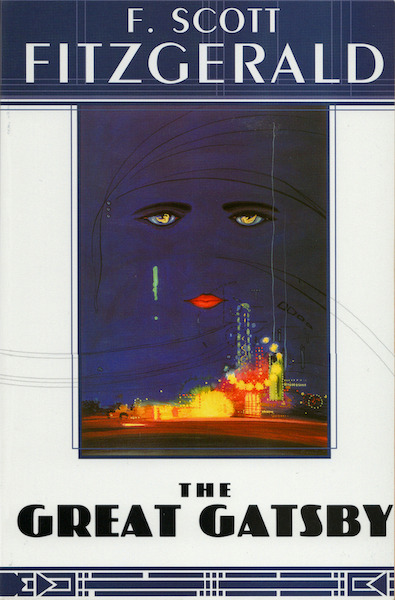
Title: The Great Gatsby
Author: F. Scott Fitzgerald
Publisher: Scribner
Year: 2004
Originally published: 1925
Pages: 180
Cover design & illustration by: Cherlynne Lee & Francis Cugat
Summary
After moving to New York to work in the bonds business, Nick Carraway befriends his neighbor, the enigmatic Jay Gatsby, whose famously extravagant parties draw all kinds of people to his Long Island mansion—all except for Daisy Buchanan, the true object of Gatsby’s display. But soon, through Nick’s connection as Daisy’s cousin, the worlds of old and new money collide, and Gatsby, Daisy, and Tom, Daisy’s husband, trap more than just themselves on an ill-fated path toward tragedy and death.
Review
Considered by many to be a classic American novel, F. Scott Fitzgerald’s The Great Gatsby is a book of balanced contradictions that entices repeated readings in spite of its seemingly common construction.
This is first felt in Fitzgerald’s writing style. At once poetically concise yet also verbose and obscure, Gatsby contains poignant prose that may either garner readers’ admiration or else be innocently passed by. That is, Fitzgerald’s mastery of language is implemented with such flourish that it occasionally produces undesired distance between the reader and the story, yet simultaneously, some ideas are so sharply imagined that there can be no mistake of their meaning, perhaps exemplified best at the novel’s end, which altogether concludes plot and theme in a single satisfying stroke.
However, the plot, for one, was likely not a challenge in this respect, for Gatsby’s story follows the standard formula at a steady, dedicated pace, assured always of where it’s at and where it’s going. It is probably for this reason that Fitzgerald was able to focus his efforts elsewhere, namely in shaping such memorable symbolism and vibrant characters, as well as thoroughly exploring the book’s primary purpose of cultural introspection. Indeed reflective of the Lost Generation’s general dissatisfaction with the world, themes of overindulgence, materialism, and superficiality permeate every line of the novel.
Thus, the unhappiness that these preoccupations impose is no better illustrated than through the characters, who all emerge from the page made of flesh and bone. Though, in the end, we may not like any of them, Gatsby, Daisy, Tom, and even Myrtle and Wilson capture our attention for the believable, complex, and human forms they inhabit in the story. Mainly attributable to the subtleties in their actions and dialogue, Fitzgerald accomplishes this by showing us how his characters are aware not only of themselves but of their relation to others as well—prompting them to act and react to one another and the world, rendering them and the book’s “fictional” setting all the more real to us as readers.
Aside from critiques on language and narrative simplicity, The Great Gatsby gives itself a narrow focus and faithfully adheres to it. In this, it is a safe novel, one that does not dare to leap too far from convention and, in doing so, leaves behind a story entertaining and fulfilling enough to be revisited more than once.

Leave a comment